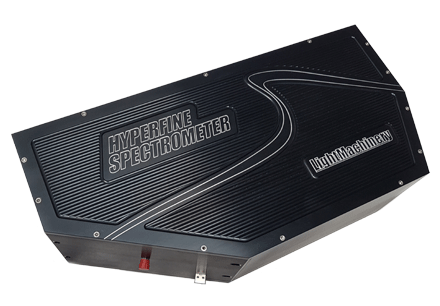| sponsor |
 |
|
Developing an Eco-Friendly Deep-UV Lamp
Using atomically controlled thin monolayers of gallium nitride (GaN) and aluminum nitride (AIN) as active regions, a research group has shown the ability to produce deep-UV emission with an LED between 232- and 270-nm wavelengths. Currently, most deep-UV lamps are mercury-based and are bulky and inefficient. A deep-UV LED would provide a smaller, more eco-friendly alternative to a mercury lamp.
|
|
|
|
|
|
Changing the Shape of CQDs Could Enable Continuous QD Lasing
A novel method for fabricating lasers uses saucer-shaped quantum dots (QDs) to produce continuous laser light that could be brighter, less expensive and more tunable than current devices. Although the ability to produce laser light using colloidal QDs (CQDs) was first demonstrated more than 15 years ago, commercial application has remained elusive because a very large amount of light is needed to excite the QDs, leading to heating loss and overheating. Most QD lasers are limited to pulses of light lasting just a few nanoseconds.
|
|
|
|
|
|
Polarized Light Unlocks Multiple Independent Holograms
Encoded multiple holographic images in a metasurface that can be unlocked separately with different polarized light could improve holograms for anti-fraud protection and entertainment. Researchers from the Harvard John A. Paulson School of Engineering and Applied Sciences (SEAS) say their novel technique could also offer more control over the manipulation and measurement of polarization.
|
|
|
|
|
|
Gold Spring-Shaped Coils and Lasers Detect Twisted Molecules
A novel technique that uses powerful lasers and gold spring-shaped coils 5,000 times thinner than human hair could improve pharmaceutical design, telecommunications and nanorobotics, as it has the ability to detect twisted molecules. Molecules twist in certain ways and depending on which way they twist can take on left or right handed forms. This twisting — called chirality — changes the way a molecule behaves in the body.
|
|
|
|
|
|
Optical Solution to RF Signal Control Could Lead to Faster Wireless Communications
Radio frequency (RF) signal control at sub-nanosecond timescales has been demonstrated on a chip-scale optical device, a discovery that could pave the way for improved wireless communication systems. To reduce time delay and improve the functionality of RF photonic signal processing, researchers at the University of Sydney took an optical tuning approach, controlling and switching RF time delay using integrated optical ring resonators with a fast tuning speed.
|
|
|
|
|
|
 The HyperFine Spectrometer
The HyperFine Spectrometer
LightMachinery Inc.
Designed for measuring hyperfine spectra and subtle spectral shifts, the HyperFine spectrometer from LightMachinery is a compact, low cost spectrometer capable of sub-picometer resolution. It is ideal for pulsed laser characterization and for measuring the small spectral shifts from Brillouin scattering.
Visit Website
Request Info
|
|
|
|
|
Ukiva Machine Vision Conference & Exhibition 2017
April 27, 2017 - Mk Arena - Milton Keynes United Kingdom
The first ever UKIVA (UK Industrial Vision Association) Machine Vision Conference & Exhibition will offer 50 technical vision seminars and 30 live demonstration booths, highlighting the latest developments, technologies and applications within the machine vision and imaging industry. With contributions from a range of imaging specialists, the conference will provide a breadth of information through multiple informative presentations across a variety of vision topics. There will be plenty to interest all attendees, from those new to machine vision to the most experienced users and system integrators. The emphasis will be on the benefits that vision technology can bring for a host of different industries and applications.
|
|
|
|
Large-Scale, Deep-Tissue Neuronal Imaging
Thu, Apr 20, 2017 1:00 PM - 2:00 PM EDT
Lingjie Kong, Ph.D., will speak on advances in large-scale deep tissue imaging of biological dynamics, focusing on applications in neuroscience. Kong received his Ph.D. in Optical Engineering from Tsinghua University in 2012. For postdoctoral training, he worked in X. Sunney Xie's group at Harvard University, and in Meng Cui's groups at Howard Hughes Medical Institute's Janelia Research Campus and Purdue University, sequentially. He has recently joined the faculty at Tsinghua University. This webinar is sponsored by Semrock.
|
|
|
|

CALL FOR ARTICLES!
Photonics Media is currently seeking technical feature articles on a variety of topics for publication in our magazines (Photonics Spectra, Industrial Photonics, BioPhotonics and EuroPhotonics). Please submit an informal 100-word abstract to Managing Editor Michael Wheeler at Michael.Wheeler@Photonics.com, or use our online submission form.
|
|
|
|